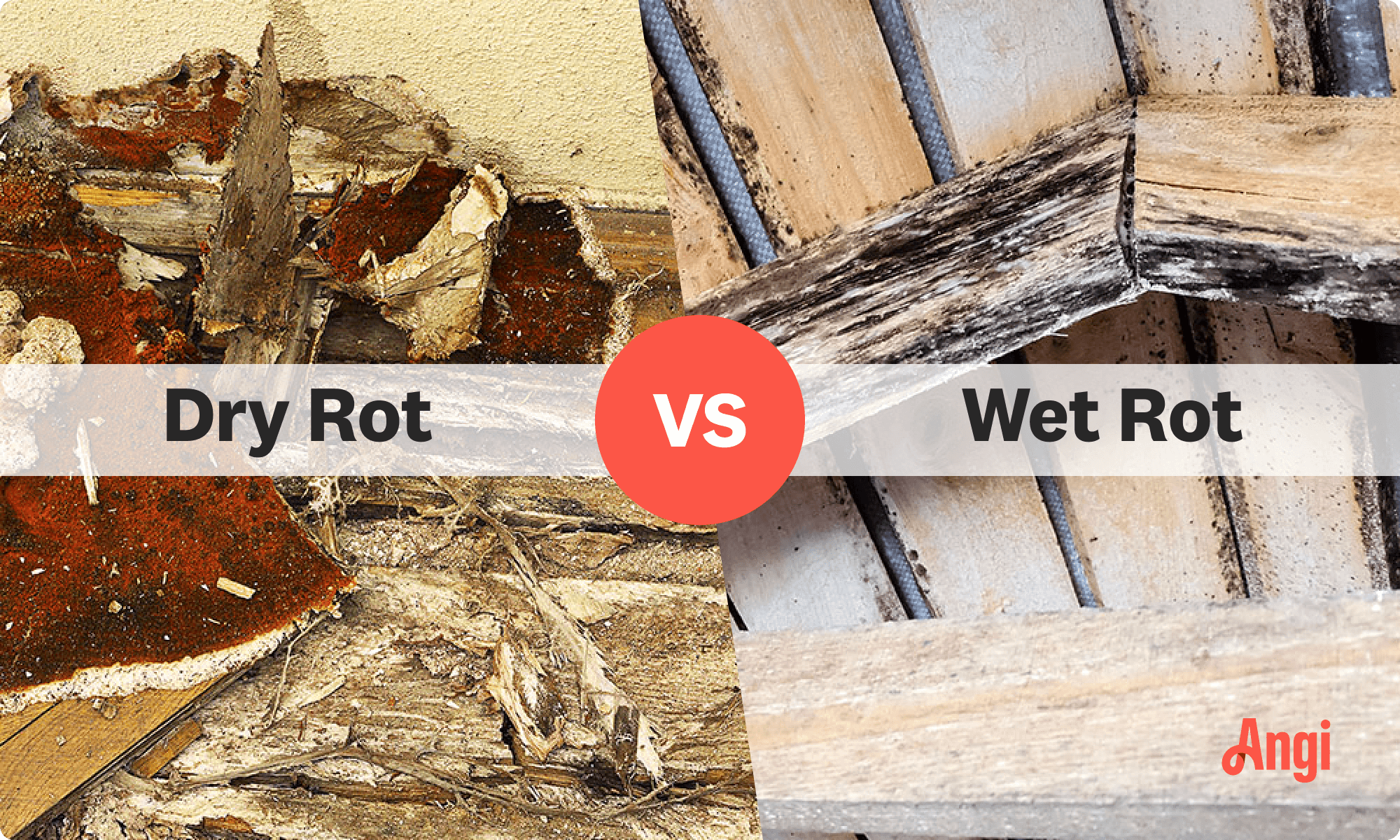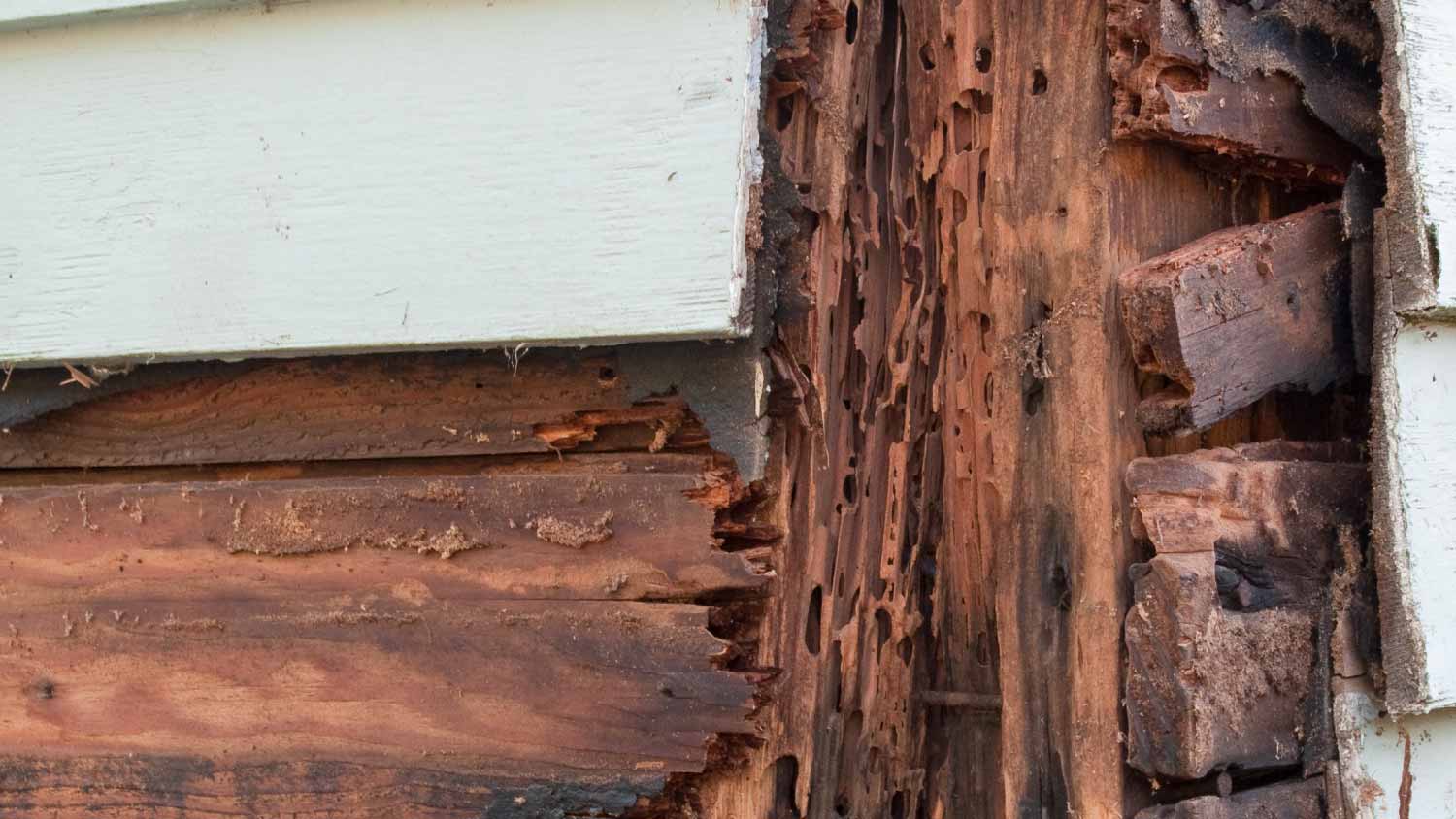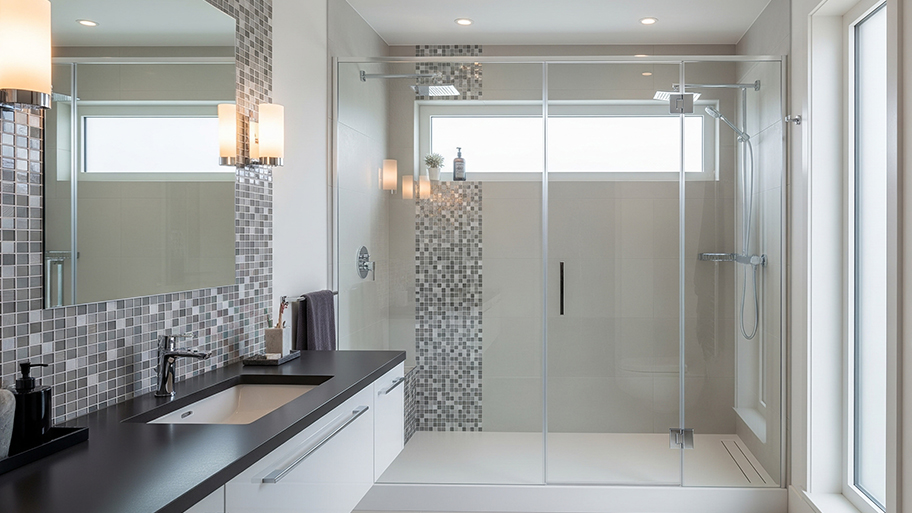
Need to get rid of lingering smoke odors in your home? Learn how much smoke remediation costs to budget accurately for this major undertaking.
Spotting the differences in types of wood rot is a challenge


Wet rot tends to be white in color, while dry rot often has rusty colors.
Wet rot smells moldy or musty, while dry rot smells earthy and mushroomy.
Dry rot makes wood brittle and crumbly, while wet rot creates soft, spongy wood.
Moisture is the underlying issue leading to both types of wood rot, so treating the source of the water or moisture is key to preventing ongoing problems.
If you notice signs of wood rot on your property, it’s helpful to know which type you’re dealing with. Two types of wood rot are common—wet rot and dry rot. Being able to compare dry rot vs. wet rot and identify the differences is challenging but possible. In this guide, we’ll explain how to figure out what kind of wood rot you’re seeing, which is helpful in determining how to combat it.
When taking on this project, expect questions only a pro can answer. With our network of local pros, you'll get the job done and your questions answered—without the hassle and stress of doing it yourself.

While both types of wood rot stem from a moisture issue, a key difference between dry rot and wet rot is that Serpula lacrymans is the only fungus that causes dry rot. Many types of fungi can cause wet rot. Dry rot leaves wood brittle and creates an orange discoloration, while wet rot creates sponginess and softness in wood and leaves behind a white or black discoloration. Both types require moisture to form, but dry rot can continue to spread through dry wood, while wet rot cannot.
Though the terms are used interchangeably, wood rot and dry rot have different meanings. Wood root is a broad term that describes various types of fungal decay in wood, while dry rot is a specific type of wood rot caused by the fungus Serpula lacrymans. Dry rot can thrive at a low moisture level and spread rapidly across plaster and even masonry to infect new areas of wood.
| Type of Difference | Wet Rot | Dry Rot |
|---|---|---|
| Early signs | White strands | White strands |
| Later signs | White discoloration | Orange discoloration |
| Common wood damage | Spongy, soft wood | Brittle, crumbly wood |
| Speed of spread | Slow to moderate | Moderate to aggressive |
| Causes | Excess moisture | Excess moisture |
| Spreads through | Damp wood | Damp or dry wood |
| Primary locations | Damp wood | Damp wood |
| Secondary locations | Drywall | Drywall and plaster |
| How to fix | Remove damage | Remove damage |
| How to avoid | Ventilate the area | Ventilate the area |

At first glance, wet rot and dry rot look very similar. However, there are some key differences in appearance to look out for to identify which is causing your damage.
When the fungal spores for dry rot and wet rot germinate, the initial growth looks similar. Both types of wood rot create whitish strands called hyphae that resemble spider webs. They go across the top of the affected wood.
Eventually, the hyphae morph into mycelia, which creates discoloration and can leave fruiting bodies (mushrooms) behind. At this stage, differences in color and size begin to appear.
Wet rot mycelia resemble off-white mushrooms and are smaller and flatter than dry rot mycelia, which can grow into quite complex, large shapes.
What does dry rot look like in the mycelia phase? Dry rot’s mycelia are often orange or red in color, almost resembling rust on a piece of metal. If the wood is drier as the dry rot mycelia form, they can be off-white or light gray with hints of yellow or purple.
Even though wet rot causes wood to become soft and spongy and dry rot creates brittleness, both types of wood rot eventually affect the structural integrity of the wood. Both wet rot and dry rot eat away at the wood, creating weakness. If the wood is supporting large amounts of weight, it could collapse because of the damage from the rot, causing a structure to fail. If it’s not, you may just notice severe surface damage, like holes, gouges, flaking, peeling, or pitting.
To eliminate the damage, you should call a local water damage restoration professional who can remove and replace the rotted wood. Dry rot is more difficult to eradicate completely than wet rot, meaning it may reappear without the help of a pro.
Both dry rot and wet rot need some level of moisture in the wood before the spores can germinate. Dry rot spores need at least 20% moisture concentration in wood to begin growing. Wet rot spores need between 30% and 60% moisture concentration. Without the right moisture level available, the spores won’t start growing. As such, the best way to prevent wood rot is to limit moisture levels.
How do you stop wood rot? With both dry rot and wet rot, the best option is to keep moisture away from the wood. If you have water damage from a flood or pipe leak, try to dry the area as much as possible and add ventilation to prevent moisture from returning. If you’re just working on avoiding rot in moist areas, like a crawl space, add ventilation or install a dehumidifier to keep the area dry.
Wood that’s suffering from dry rot will have an earthy odor that somewhat resembles mushrooms. Wet rot will smell musty or even moldy. Using your sense of smell isn’t the clearest way to get an answer about what type of rot you’re dealing with, but it can help. If you have a respiratory issue or allergies, it’s best to stick to identifying by sight or calling a pro for help.
Both types of wood rot can cause major damage to your home, including decorative wood like planter boxes, garden partitions, and exterior trim and structural components like support beams, rafters, and joists. However, there are some differences in how severe these problems are, too.
Dry rot is more likely to cause widespread damage in your home because it can spread through dry wood. If a certain portion of your home experiences high moisture levels, wet rot can set in but won’t spread to areas with low humidity. For example, a wet crawl space infected with wet rot may never cause damage to the rest of your structure. Dry rot can spread through dry wood once an infection sets in, so it’s more likely to lead to widespread damage and drive up your wood rot repair costs.
Dry rot grows more aggressively than wet rot, meaning it can cause structural damage to wood more quickly. You should hire a water damage professional to eliminate both types of wood rot, but you should be more urgent when you notice dry rot.
Even though dry rot is more aggressive, both types of wood rot grow relatively slowly. When the fungal spores reach wood with the right moisture concentration, it can take a week or longer for them to germinate. After germination, it can take a few months to a few years for the rot to begin, causing major structural damage to the wood.
Treatment for both types of wood rot should begin with eliminating the moisture issue that led to the rot in the first place. This can involve various treatment options, including basement waterproofing, installing a whole-home dehumidifier, and more.
After your professional solves the moisture issue, they may use wood putty to fill in surface damage, but more severe problems will require sistering structural components or replacing the wood altogether. Professionals will normally go to greater measures to repair dry rot because the risk of it continuing to spread after the initial infection is higher.
From average costs to expert advice, get all the answers you need to get your job done.

Need to get rid of lingering smoke odors in your home? Learn how much smoke remediation costs to budget accurately for this major undertaking.

Ozone treatment can help with lingering smoke odors. Learn about ozone smoke removal costs to get an accurate idea of how to budget for this service.

Water damage restoration costs depend on the severity of the problem, the type of water, and the length of time the damage has been occurring.

You don’t always need a pro to clean up smoke damage. Use this simple guide on how to clean smoke damage on your walls and ceilings to DIY the work.
Learning how to find a water leak in your home can be tricky, but these tips can speed up the process and potentially save you from severe water damage.

This article covers everything you need to know about water damaged concrete, including causes, DIY fixes, repair costs, when to replace it fully, and maintenance tips.